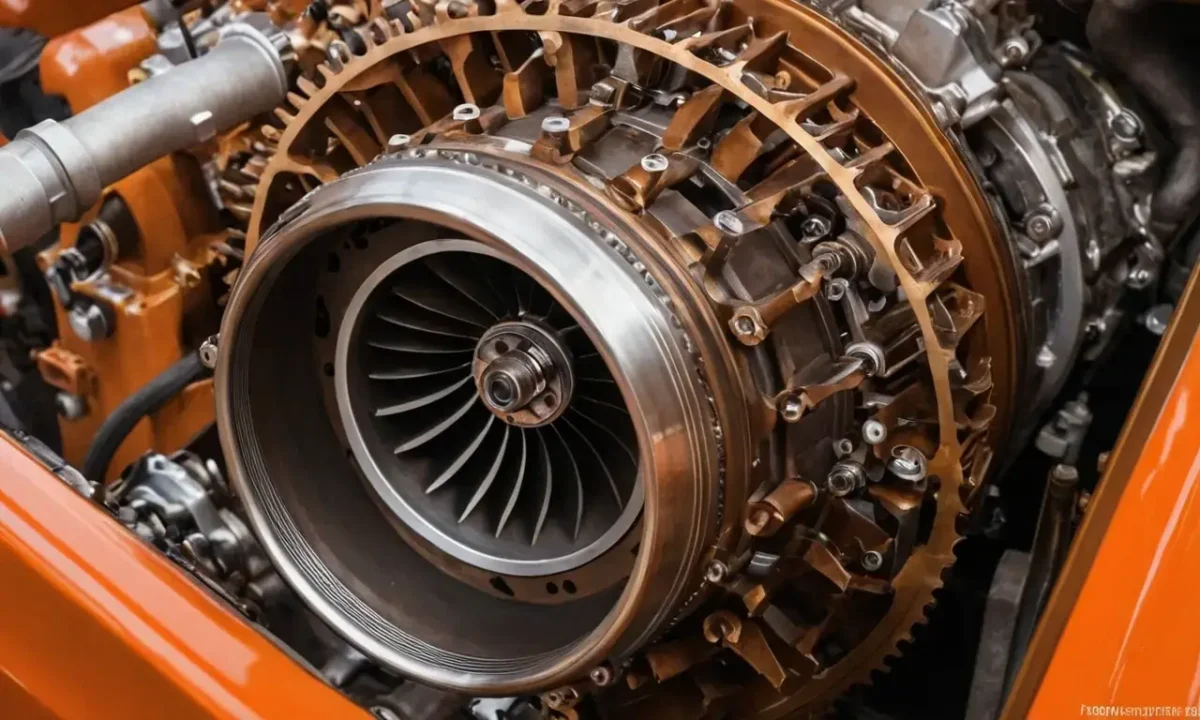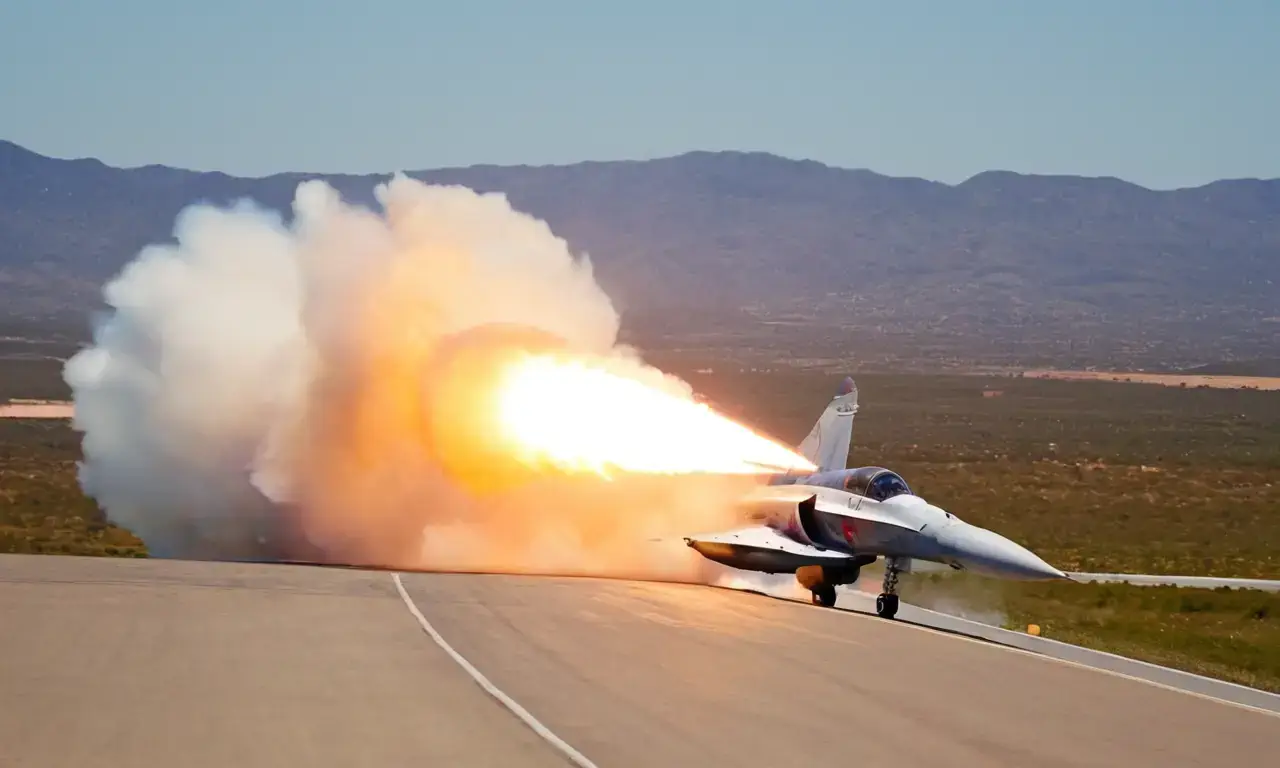
Afterburner: Boosting Jet Engine Thrust Through Combustion

An afterburner is a crucial component of many jet engines, playing a significant role in enhancing their thrust capabilities. This device allows aircraft to achieve higher speeds and altitudes more efficiently, particularly during takeoff or when maneuvering at high speeds. Understanding how an afterburner functions and its impact on aviation is essential for anyone interested in the mechanics of flight.
This article delves into the intricacies of afterburners, exploring their purpose, working principles, advantages, disadvantages, applications, safety considerations, and future trends in jet engine technology. By examining these aspects, we aim to provide a comprehensive understanding of this vital component that has revolutionized aviation.
What is an Afterburner?
An afterburner is essentially an auxiliary combustion chamber integrated into the exhaust system of a jet engine. Its primary function is to significantly increase thrust by injecting fuel directly into the hot exhaust gases already exiting the engine. This process involves several key steps:
- Exhaust Gas Generation: The main engine's combustion cycle generates high-temperature exhaust gases that are expelled from the engine.
- Fuel Injection: Afterburner systems inject additional fuel into these exhaust gases, typically through a nozzle or injector located within the exhaust stream.
- Combustion and Expansion: This injected fuel mixes with the hot exhaust gases, igniting spontaneously due to the high temperatures. The combustion process further heats the gases, causing them to expand rapidly.
- Thrust Generation: As the expanded gases are expelled from the engine at a much higher velocity than before, they generate additional thrust, increasing the aircraft's overall speed and acceleration.
The afterburner essentially acts as an "accelerator" for the exhaust gases, significantly boosting their momentum and translating into increased thrust. This process is similar to how rockets work, where expelling mass creates thrust by accelerating the rocket away from Earth.
How Does an Afterburner Work?
The operation of an afterburner involves a series of interconnected steps that culminate in increased thrust generation:
- Exhaust Gas Flow: The jet engine's combustion process generates hot exhaust gases that are directed through the engine's exhaust nozzle. This flow is crucial for the subsequent stages of the process.
- Fuel Injection System: A dedicated fuel injection system delivers additional fuel to the exhaust stream at precisely timed intervals. This system ensures efficient mixing and optimal combustion conditions.
- Combustion Chamber: The injected fuel mixes with the hot exhaust gases within a specially designed combustion chamber. This chamber is often located near the engine's nozzle, allowing for efficient mixing and combustion.
- Expansion of Gases: As the fuel ignites within this chamber, it undergoes rapid combustion, generating significant heat and expanding the gases significantly.
- Thrust Generation: The expanded gases are then expelled from the engine at a much higher velocity than before. This increased velocity translates into increased thrust, allowing the aircraft to accelerate more quickly.
The afterburner's ability to increase thrust is directly linked to its capacity for efficient fuel combustion and gas expansion. By manipulating these factors, engineers can maximize the amount of thrust generated by the jet engine.
Advantages and Disadvantages of Afterburners
Afterburners offer several advantages in terms of performance enhancement but also come with certain drawbacks:
Advantages:
- Increased Thrust: The primary benefit is a significant increase in thrust, allowing aircraft to accelerate faster and achieve higher speeds. This is particularly beneficial for takeoff from short runways or during high-speed maneuvers.
- Improved Efficiency: While fuel consumption increases, the afterburner can improve overall engine efficiency by reducing drag and optimizing airflow within the engine.
- Combat Maneuvers: In military applications, afterburners are essential for maneuvering aircraft at high speeds during combat situations. This allows pilots to quickly change direction or engage in aerial dogfights with greater agility.
Disadvantages:
- High Fuel Consumption: The most significant drawback is the substantial increase in fuel consumption associated with afterburner operation. This can significantly impact range and operational efficiency, especially for long-distance flights.
- Limited Duration: Afterburners are typically used for short durations due to their high fuel demand. Extended use can quickly deplete fuel reserves, limiting their practical application in prolonged flight scenarios.
- Weight Considerations: While afterburner systems themselves add minimal weight, the additional components required for fuel injection and control can increase overall aircraft weight slightly.
Despite these drawbacks, the advantages of increased thrust and maneuverability often outweigh the limitations, making afterburners a valuable tool in specific aviation applications.
Applications of Afterburners in Aviation

Afterburners have found diverse applications across various types of aircraft:
- Military Aircraft: Fighter jets like F-15s and F-22s utilize afterburners extensively for high-speed maneuvers, dogfights, and rapid acceleration during combat operations.
- Commercial Airliners: While less common in commercial airliners due to fuel efficiency concerns, some larger aircraft may employ afterburners for specific situations like emergency takeoff or high-altitude flight.
- Military Transport Aircraft: Some military transport aircraft, such as C-17 Globemaster III, utilize afterburners during takeoffs and landings on short runways to achieve optimal performance in challenging conditions.
The application of afterburners is heavily influenced by the specific requirements of each aircraft type and its intended use.
Safety Considerations and Regulations
Safety is paramount when dealing with jet engines and their associated systems:
- Fuel Management: Proper fuel management is crucial for safe operation, as excessive fuel consumption can lead to engine failure or reduced range. Pilots must be trained in fuel-saving techniques and understand the limitations of afterburner use.
- Maintenance and Inspection: Regular maintenance and inspections are essential for ensuring proper functioning of afterburners and preventing potential malfunctions. These checks include verifying fuel lines, injectors, and combustion chamber integrity.
- Regulatory Compliance: Various aviation authorities have established regulations regarding afterburner usage, including maximum operating times and altitude restrictions. Adhering to these guidelines ensures safe operation and minimizes risks associated with exhaust emissions.
By prioritizing safety measures and adhering to regulatory guidelines, pilots can maximize the benefits of afterburners while minimizing potential hazards.
Future Trends in Jet Engine Technology
The future of jet engine technology is marked by continuous innovation and advancements:
- Advanced Materials: Research into lighter and more durable materials will play a crucial role in developing next-generation engines with improved fuel efficiency and reduced weight.
- Hybrid Propulsion Systems: The integration of alternative propulsion systems, such as electric motors or hydrogen-powered engines, could revolutionize aviation by reducing reliance on traditional jet fuels.
- Sustainable Aviation Fuels: The development of sustainable aviation fuels (SAF) will significantly reduce the environmental impact of aircraft operations and contribute to a more sustainable future for aviation.
These advancements in engine technology promise to further enhance performance, efficiency, and sustainability in the years to come.
Conclusion
Afterburners are essential components of jet engines that play a crucial role in enhancing thrust capabilities. By injecting fuel into the exhaust stream, they allow aircraft to achieve higher speeds and altitudes more efficiently. While afterburners offer significant advantages in terms of performance and maneuverability, their high fuel consumption and limited operational duration present certain limitations.
Despite these drawbacks, afterburners remain valuable tools for various applications, including military operations and commercial airliners. As technology continues to evolve, we can expect further advancements in jet engine design that will lead to more efficient and sustainable aviation practices.
Leave a Reply





Related Links